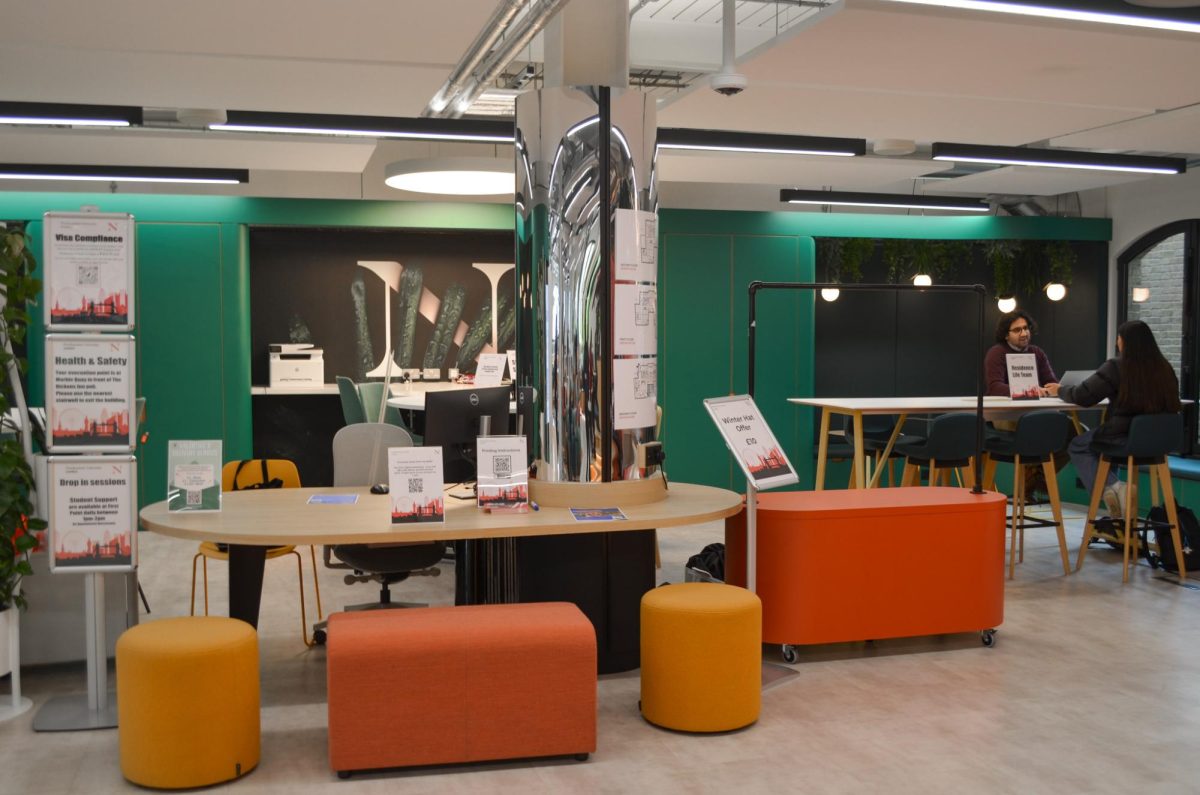By Danny Deza
From hospital waiting rooms to university hallways, the art that graces bare walls around us exists to set a particular mood, some experts say.
As if to set a scene of tranquility, abstract paintings in President Joseph Aoun’s waiting room – in brown and red, earthy tones – complement contemporary cherry wood furniture and green plants.
‘Art is a way to add color and interest to spaces; it is an accessory like a necklace or a tie. Without art, a space can sometimes be a bit plain,’ said Amy Pace, a senior architectural designer at Northeastern in an e-mail to The News. ‘Each project is very different and if a client has an interest in invoking a mood with the display, I will certainly select imagery accordingly.’
Though the message of this artwork in Aoun’s office deliberately serves a purpose – to calm students with its colors and composition and, in turn, to impress potential visitors with its sophisticated, abstract style – it wasn’t an old favorite handpicked by Aoun. He had the help of consultants from Boston Art, Inc., a firm that lends a hand to corporations and institutions in decorating their often bare walls – whether it is a waiting room in the office of a professor, administrator or local physician.
‘I felt that corporations, institutions and hospitals needed experts on the effect of visual arts that helped them guide their purposes,’ said John Kirby, president of Boston Art, Inc. ‘Everybody has different goals, and we understand the art marketplace. But our ability is also to understand how to read the client’s situation and then, you know, put the icing on the cake.’
While a corporate law firm might want museum-quality artwork to impress potential or existing clientele, a hospital’s goal is to put families who bring loved ones for treatment at ease, and to affirm the institution is top-notch and trustworthy, Kirby said.
Harvard professor of psychology Ellen Winner, author of ‘Invented Worlds: The Psychology of the Arts,’ said art has a proven power to change moods. After a recent visit to a courthouse, Winner said she encountered enormous paintings using primary colors that gave her a positive feeling walking in.
‘I think aesthetics are incredibly important, because it lifts us out of ourselves,’ she said. ‘And I think when you’re in a stressful environment, like a hospital, nothing can be more important than that – like listening to a song that you love, or reading a novel that transports you away from your present.’
Middler international affairs major Diana Israelian said she believes that setting the right mood is very important – and the cozier the room, the better.
‘I think you want to make an atmosphere as warm … as possible,’ she said. ‘Whether it’s a hospital or hallways at Northeastern, what we see, I think, definitely effects our moods.’
Odds are, you have seen the company’s work: Northeastern has benefited from Boston Art, Inc.’s expert taste since 1992. Aside from Aoun’s waiting area, consultants at the company have helped spruce up residence halls and various lobbies throughout campus.
Thomas Gilovich, professor and chair of Cornell’s Psychology Department, said that, in particular, exposure to nature scenes in art actually helps human beings function.
‘When you’re exposed to the kind of scenes in which we evolved, our mental faculties work better,’ he said. ‘A lot of art is depictions of nature – and even when it’s not, it provides much more of a varied professional landscape that activates many of those same processes as nature scenes.’
Boston Art, Inc. offers an alternative service to the corporate world, but the impulse to adorn bare walls with meaningful decoration – especially in stressful environments – isn’t uncommon at a personal level. Gilovich said he is in the midst of an aesthetic overhaul of the psychology department, which will involve his students.
In an attempt to cover walls and replace outdated oil paintings of famous psychologists, Gilovich founded what will become an annual student art competition. He predicts about 20 students will submit their entries in coming weeks; the only stipulation is the artwork must somehow relate to psychology. Otherwise, the creative process is no-holds-barred, and for the better, Gilovich said.
‘Bare walls just don’t cut it,’ he said.
– News staff Danielle Capalbo contributed to this report








